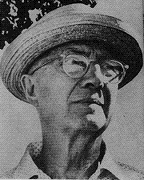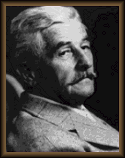An Outline of
American Literature
Modernism and
Experimentation: 1914-1945: Modernism

|
The
20th
century,
expressed a sense of modern life through art as a sharp
break from the past, as well as from Western
civilization's classical traditions. Modern life seemed
radically different from traditional life -- more
scientific, faster, more technological, and more
mechanized.
In
literature,
Gertrude Stein
(1874-1946) developed an analogue to modern art. A
resident of Paris and an art collector (she and her
brother Leo purchased works of the artists Paul Cézanne,
Paul Gauguin, Pierre Auguste Renoir, Pablo Picasso, and
many others). Using simple, concrete words as counters,
she developed an abstract, experimental prose poetry.
Subject and technique became inseparable in both the
visual and literary art of the period. The idea of form
as the equivalent of content, a cornerstone of
post-World War II art and literature, crystallized in
this period. (Source)
|
 |
"So I
took Anse. And when I knew that I had Cash, I
knew that living was terrible and that this was
the answer to it. That was when I learned that
words are no good; that words don't ever fit
even what they are trying to say at." (As I Lay
Dying)
"And so when
Cora Tull would tell me I was not a true mother,
I would think how words go straight up in a thin
line, quick and harmless, and how terribly doing
goes along the earth, clinging to it, so that
after a while the two lines are too far apart
for the same person to straddle from one to the
other; and that sin and love and fear are just
sounds that people who never sinned nor loved
nor feared have for what they never had and
cannot have until they forgot the words. Like
Cora, who could never even cook. " (Source) |
|
|
